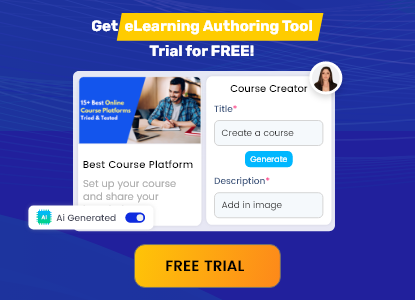In the fast-evolving world of eLearning, organizations and educators are constantly seeking ways to improve the delivery and tracking of digital learning content. If you have developed interactive eLearning modules using HTML5, you may need to convert them into SCORM (Sharable Content Object Reference Model) format to ensure seamless compatibility with Learning Management Systems (LMS).
This guide will walk you through the effortless process of converting HTML5 to SCORM, ensuring that your eLearning content is trackable, reusable, and easily integrated into various LMS platforms.
Why Convert HTML5 to SCORM?
SCORM (Sharable Content Object Reference Model) is an essential eLearning standard that enables seamless communication between learning content and Learning Management Systems (LMS). Converting HTML5 content into SCORM ensures better tracking, compatibility, and reusability across different platforms.
With SCORM, organizations can monitor learner progress, record quiz scores, and ensure consistent learning experiences across devices. It also enhances standardization, making it easier for training administrators to manage and update courses efficiently.
By converting HTML5 to SCORM, you can ensure that your eLearning modules integrate smoothly with LMS platforms, leading to a more structured and data-driven learning approach.
What is SCORM and Why Does It Matter?
SCORM is a widely accepted eLearning standard that allows content to communicate with an LMS. By converting HTML5 content into SCORM, you gain:
- Better tracking and reporting – Monitor learners’ progress, completion rates, and quiz scores.
- Interoperability – SCORM ensures that content functions across different LMSs.
- Reusability – Once SCORM-compliant, your content can be reused across multiple courses.
- Standardization – SCORM provides a consistent learning experience across different devices and platforms.
How to Convert HTML5 to SCORM?
1. Choose the Right SCORM Authoring Tool
The first step is selecting a reliable SCORM authoring tool that supports HTML5 content. Some popular options include:
- CogniSpark AI – A powerful SCORM conversion tool that simplifies the transformation of HTML5 content into SCORM-compliant formats.
- Articulate Storyline – Allows importing HTML5 content and publishing as SCORM.
- Adobe Captivate – Provides SCORM packaging features for HTML5 courses.
- iSpring Suite – Offers a quick and easy way to convert HTML5 to SCORM.
2. Embed HTML5 Content into an Authoring Tool
Once you’ve chosen the tool, follow these steps:
- Import HTML5 content – Most SCORM tools allow uploading HTML5 files.
- Configure SCORM settings – Define tracking options, such as completion criteria, quiz scores, or time spent.
- Add SCORM-compliant interactions – Ensure the content sends learner activity data to the LMS.
3. Export as SCORM Package
- SCORM 1.2 (Most commonly used)
- SCORM 2004 (For advanced tracking features)
4. Upload and Test in an LMS
- Upload it to an LMS – Platforms like Paradiso LMS, Moodle, Blackboard, or SAP Litmos accept SCORM files.
- Run a test – Ensure tracking works correctly by taking a sample course.
- Make necessary adjustments – Fix any issues and re-upload if needed.
What Are the Best Practices for Converting HTML5 to SCORM?
How Can You Ensure Smooth LMS Compatibility?
- Use SCORM-compliant authoring tools.
- Keep HTML5 content lightweight for faster loading.
- Test the SCORM package using tools like SCORM Cloud before deployment
How to Optimize SCORM Content for Engagement?
- Include interactive elements like quizzes and simulations.
- Ensure mobile responsiveness for learners on-the-go.
- Keep navigation intuitive for a seamless learning experience.
Key Takeaways
- SCORM ensures LMS compatibility and improves tracking of eLearning content.
- Choosing the right authoring tool makes HTML5 to SCORM conversion easy and efficient.
- Best practices include testing SCORM content and optimizing for engagement.
- Converting HTML5 to SCORM enhances the learner experience and simplifies course management.
Conclusion
Converting HTML5 to SCORM is a crucial step in creating structured, trackable, and engaging eLearning experiences. If you’re looking for expert assistance in SCORM conversion or custom eLearning development, reach out to our team today and take your digital learning to the next level!
About the author
Olivia Dodd
author
Olivia Dodd is an eLearning strategist at CogniSpark AI, bringing her expertise in operations, performance optimization, and inclusive learning solutions. With a strong background in business development and workforce transformation, she focuses on creating engaging and effective eLearning experiences for organizations worldwide. At CogniSpark AI, Olivia plays a key role in developing innovative learning strategies that align with corporate goals, ensuring seamless integration of technology and instructional design. Her passion for diversity, equity, and inclusion also drives her efforts to build learning solutions that are accessible and impactful for all learners. With years of experience in leadership roles, Olivia has successfully collaborated with global enterprises, enhancing their training programs through cutting-edge eLearning solutions.























